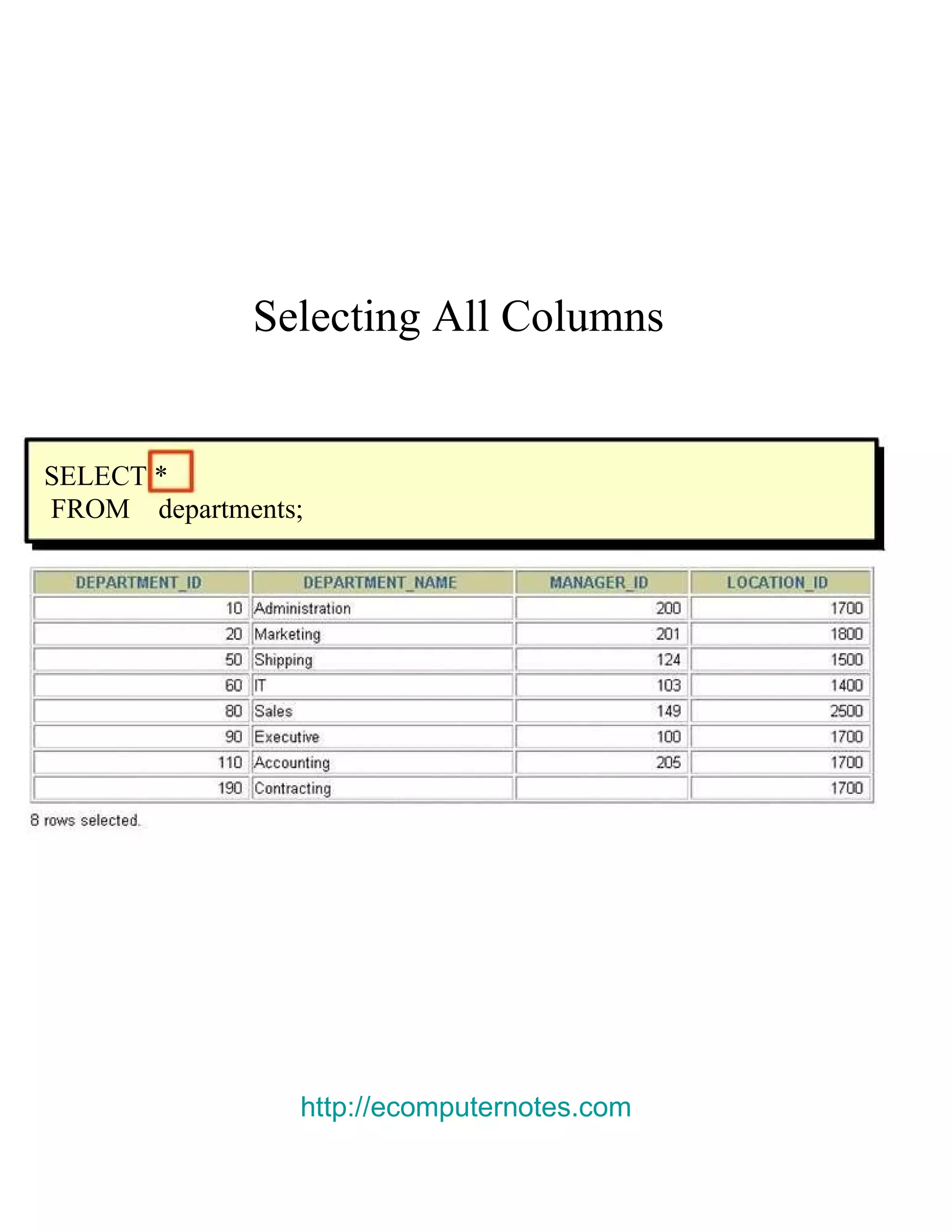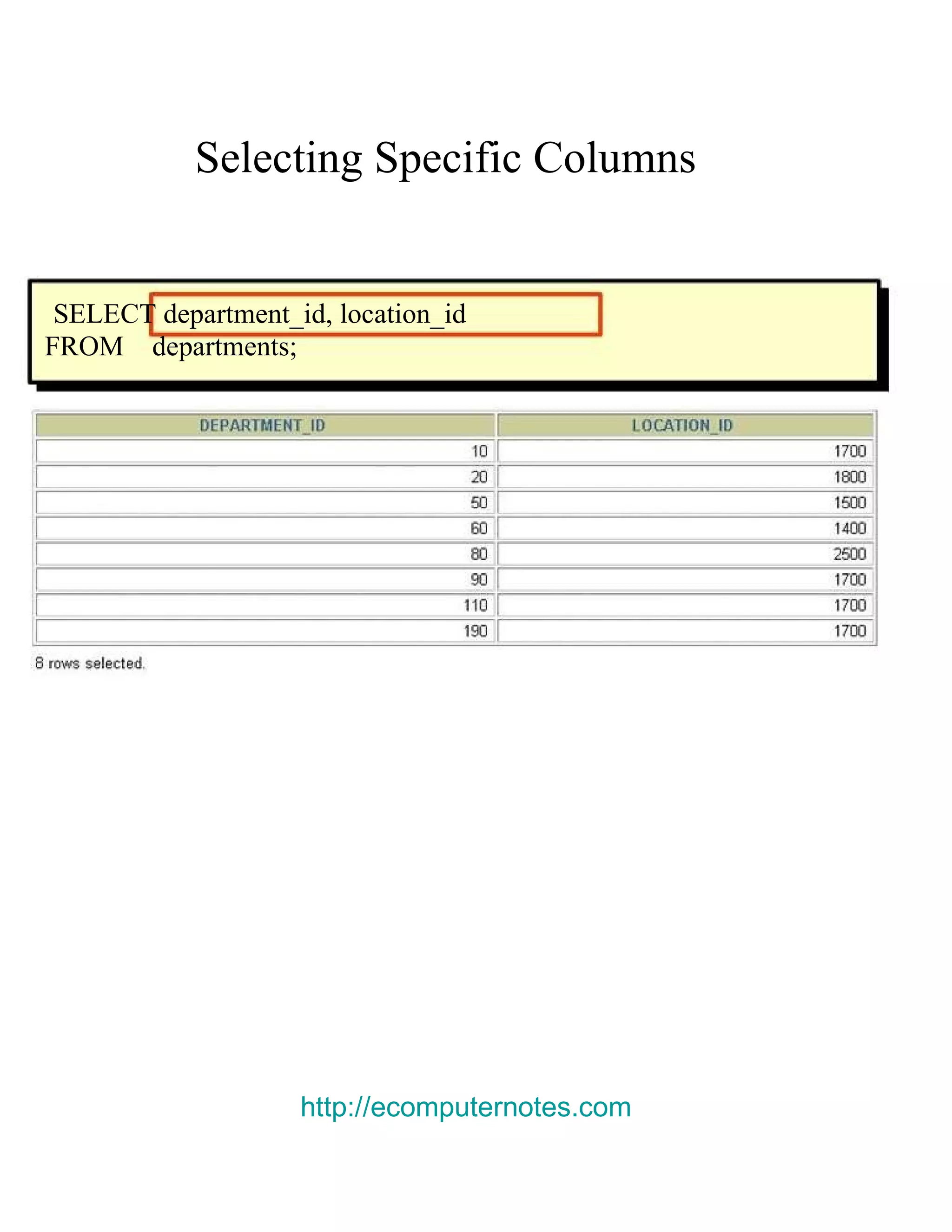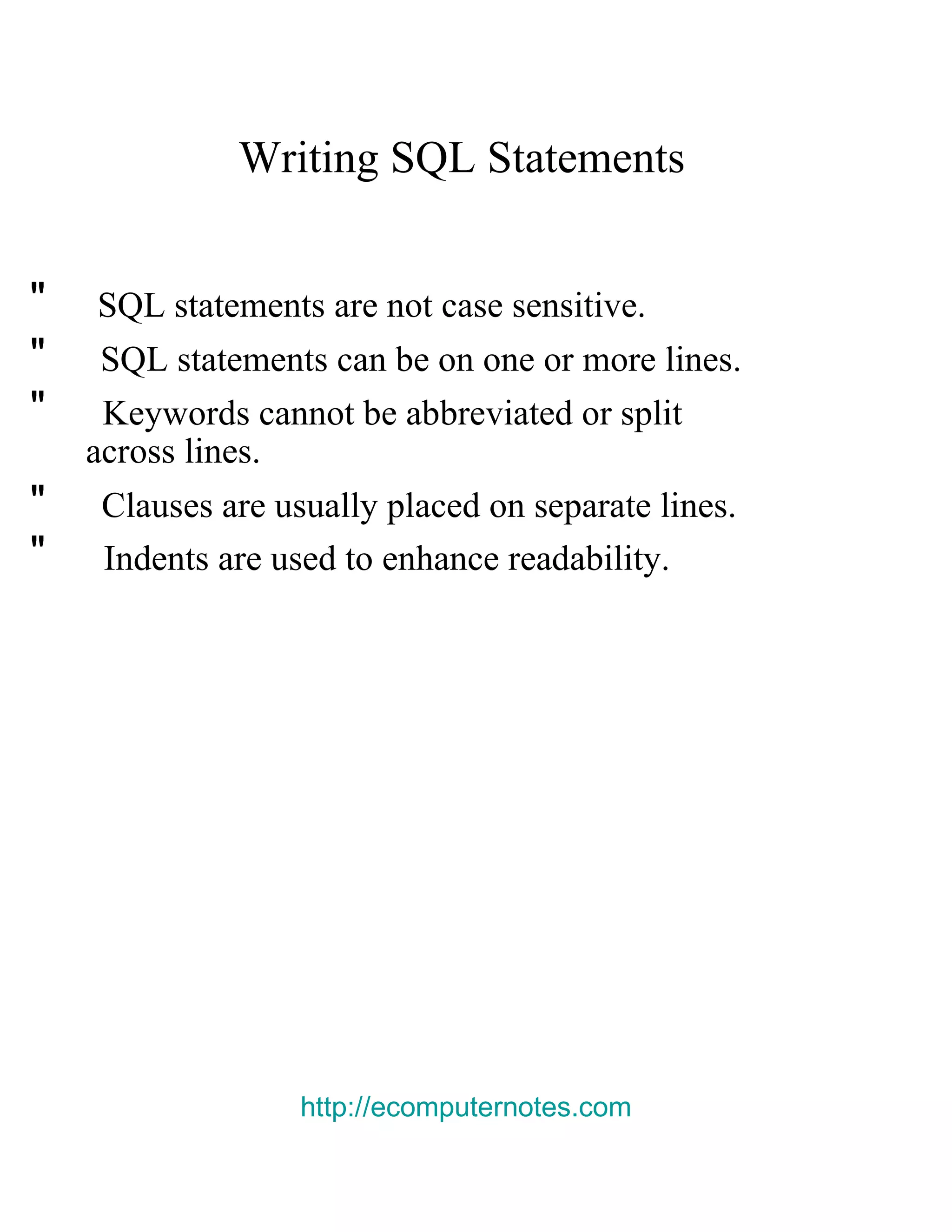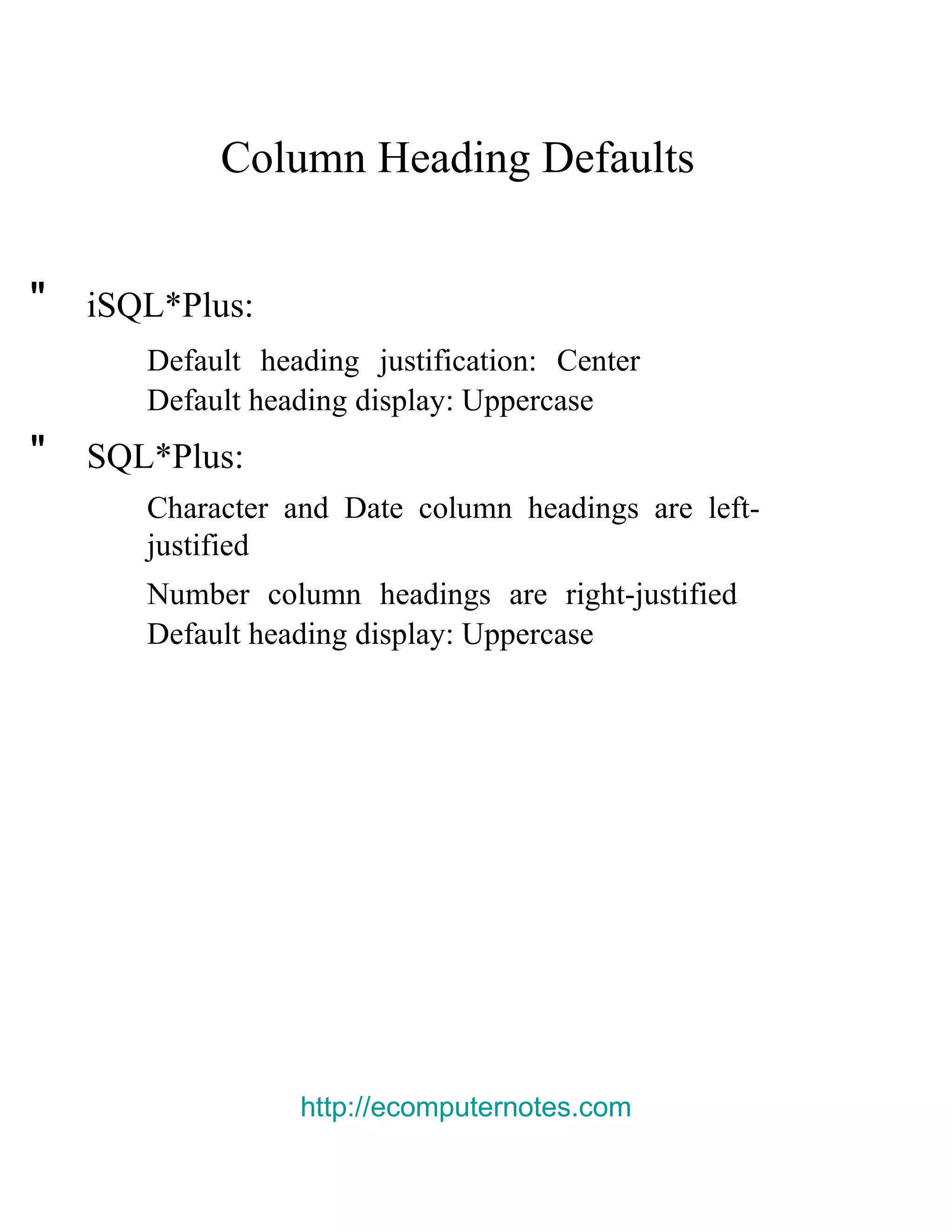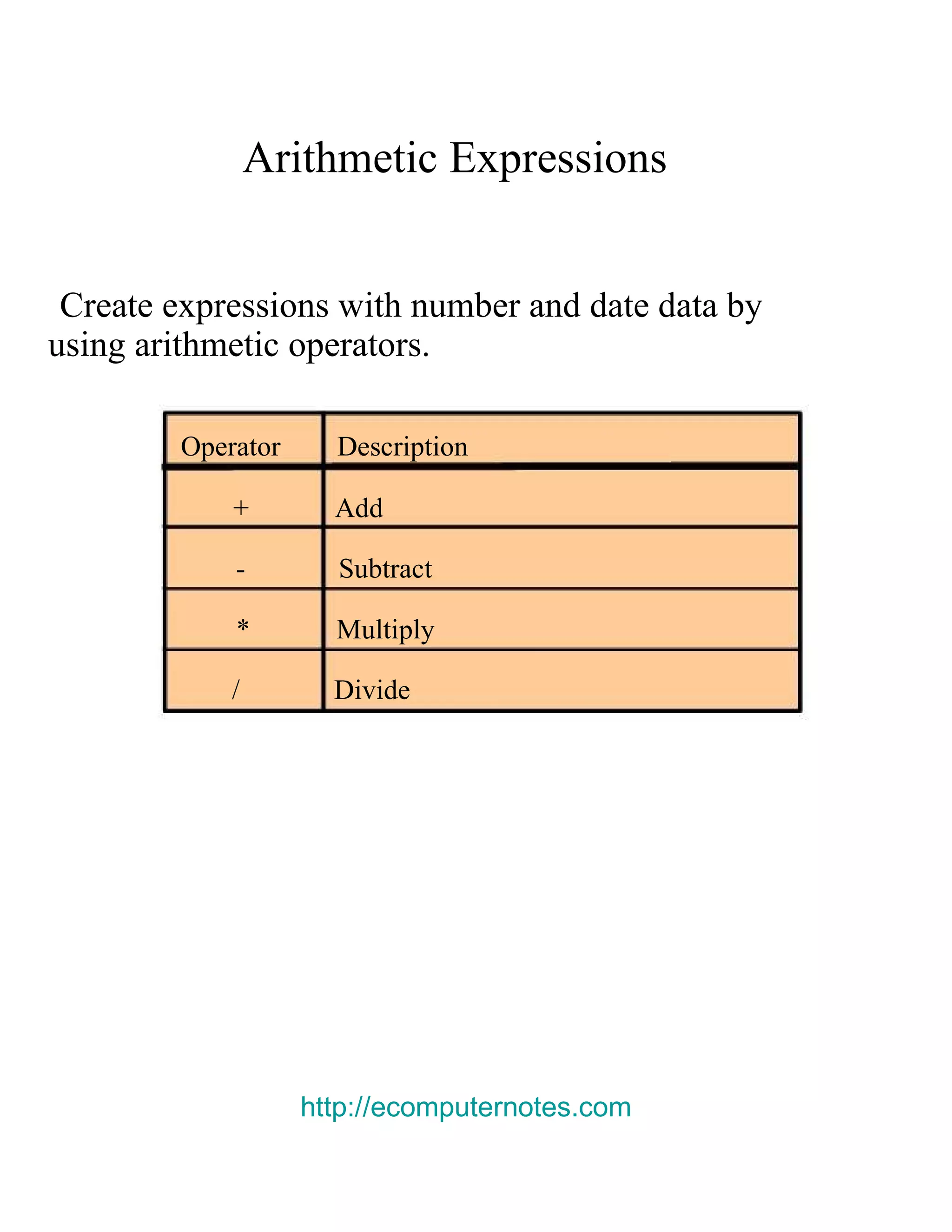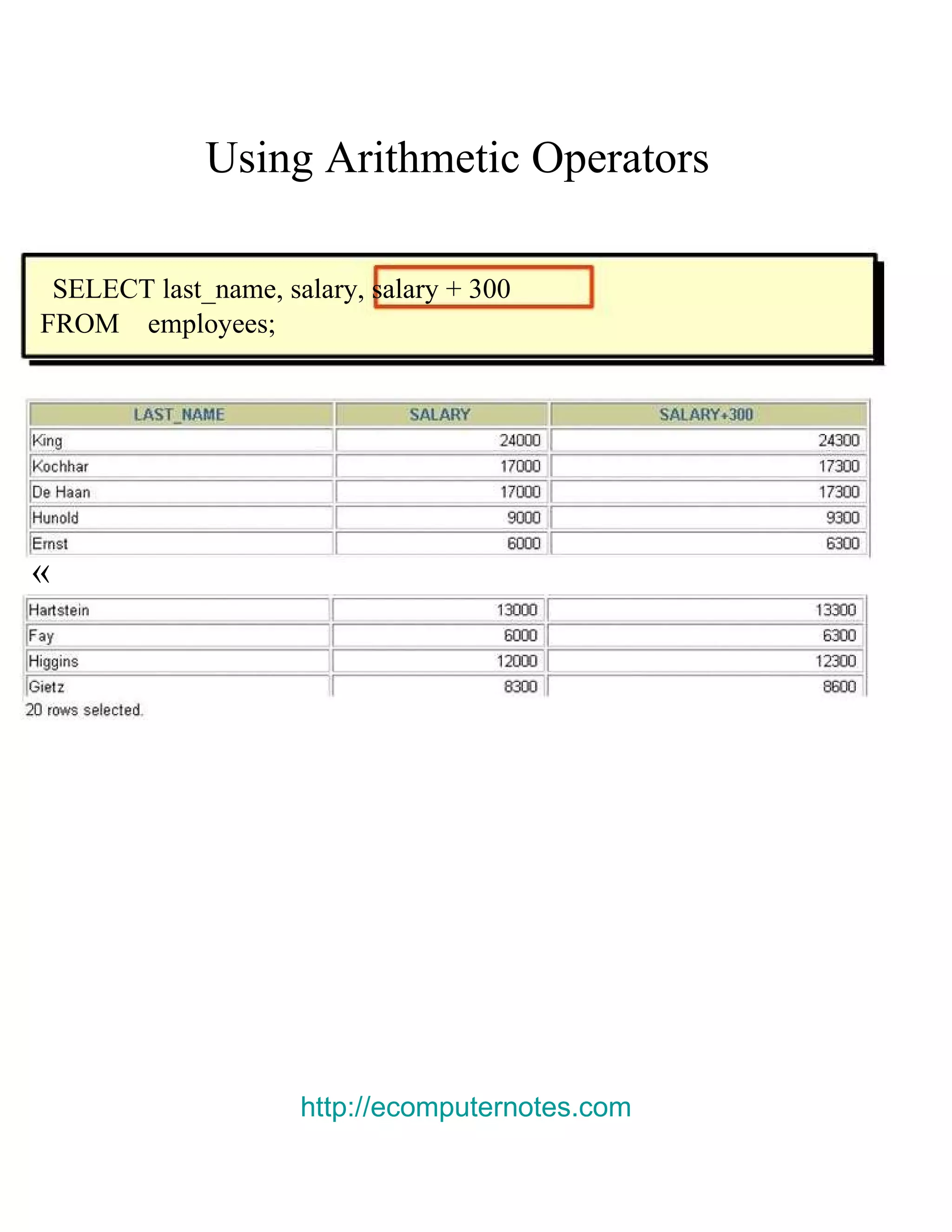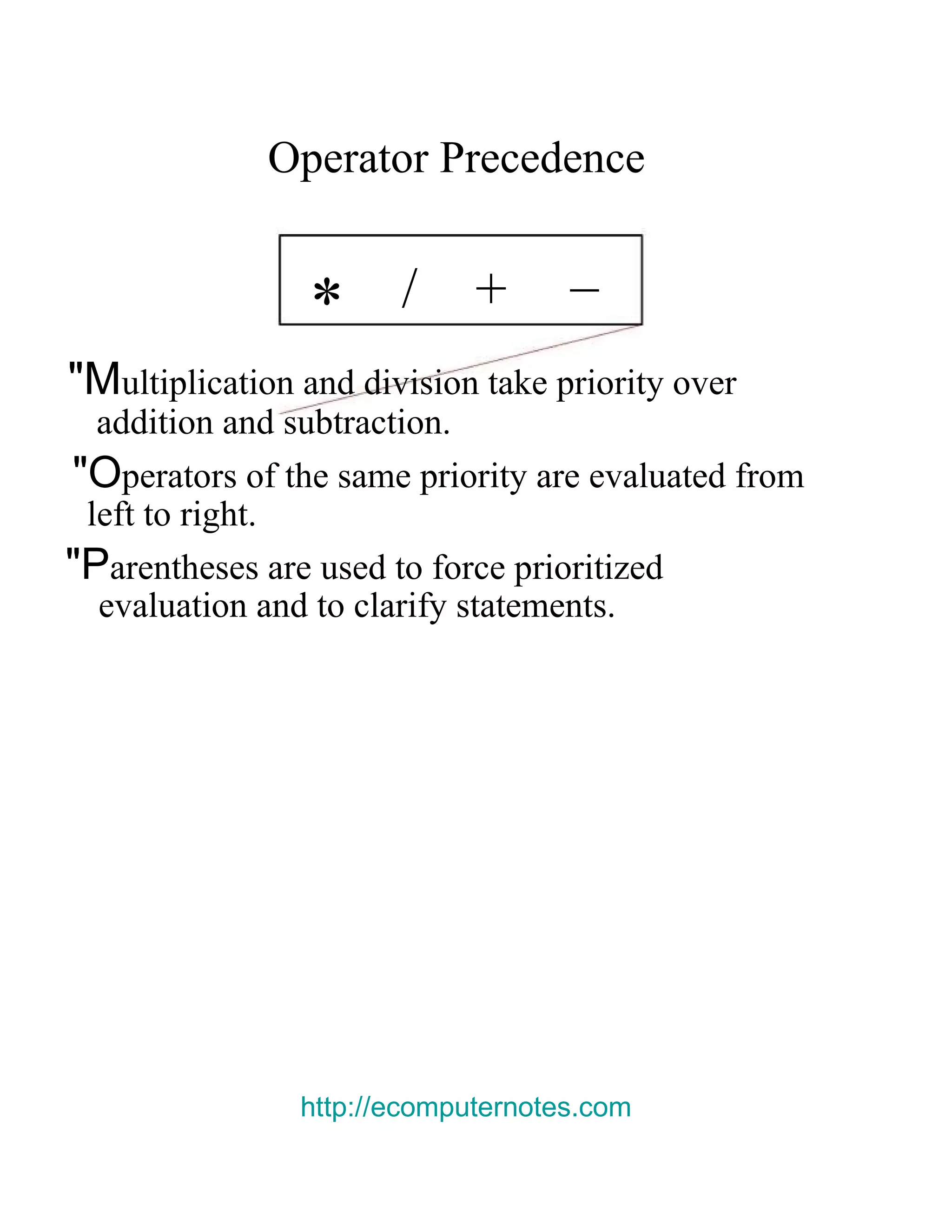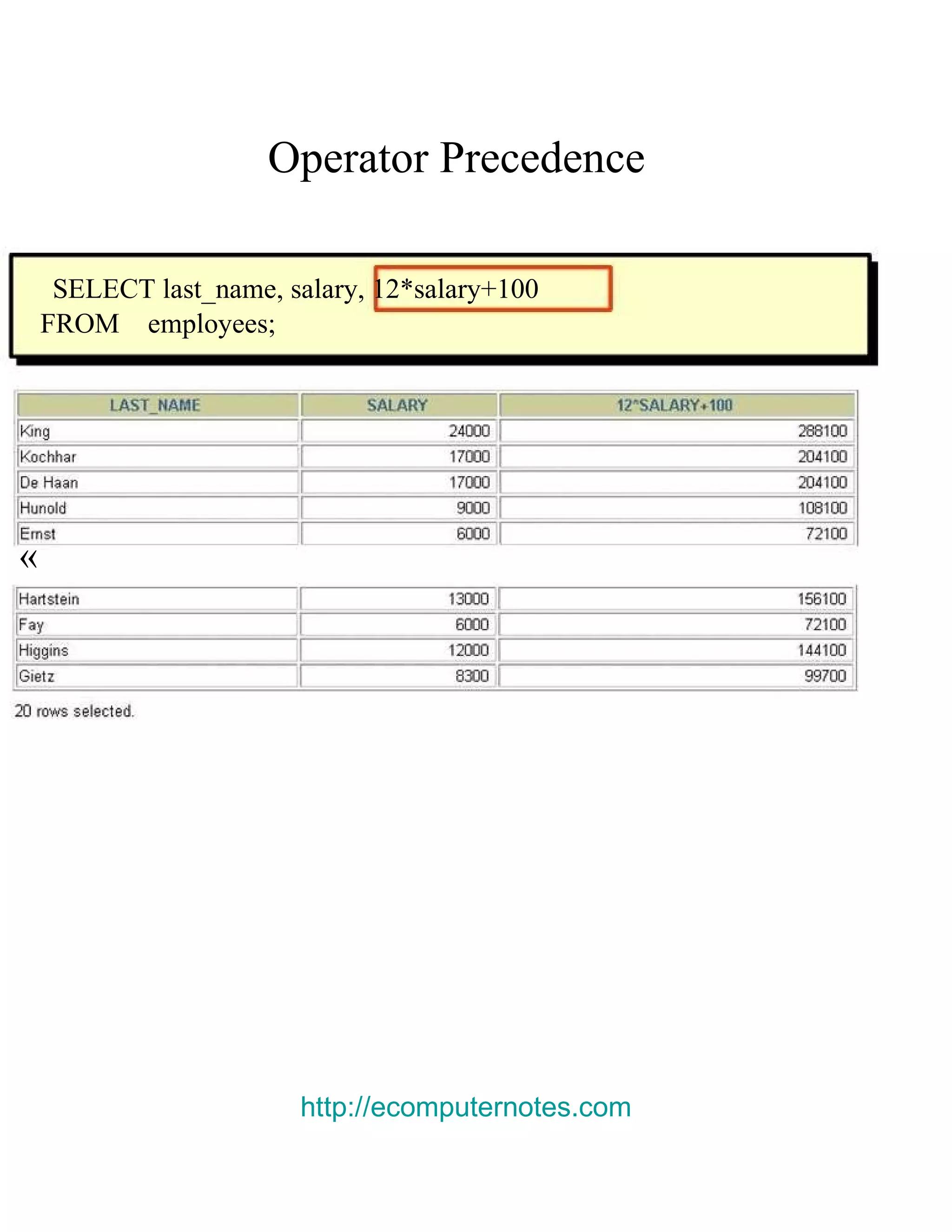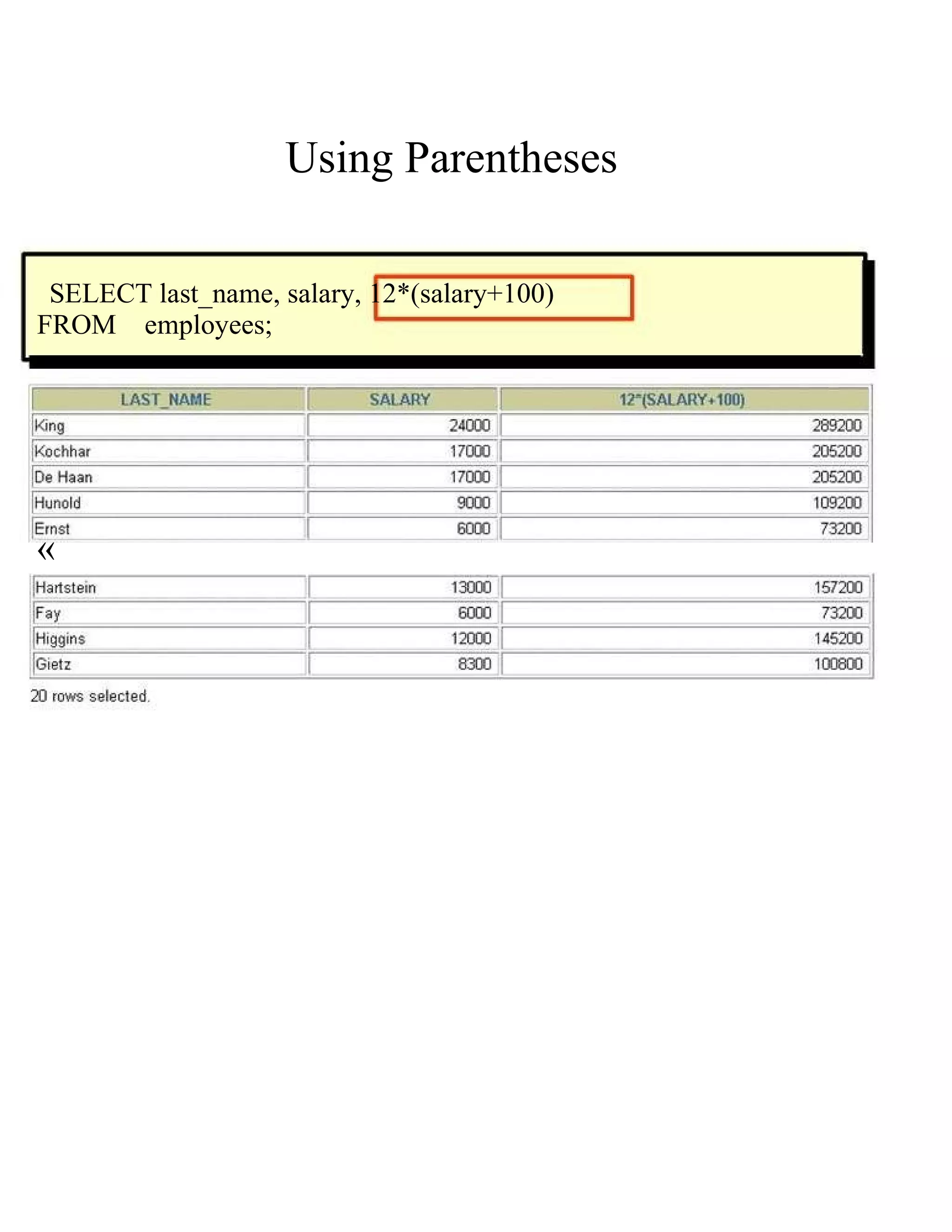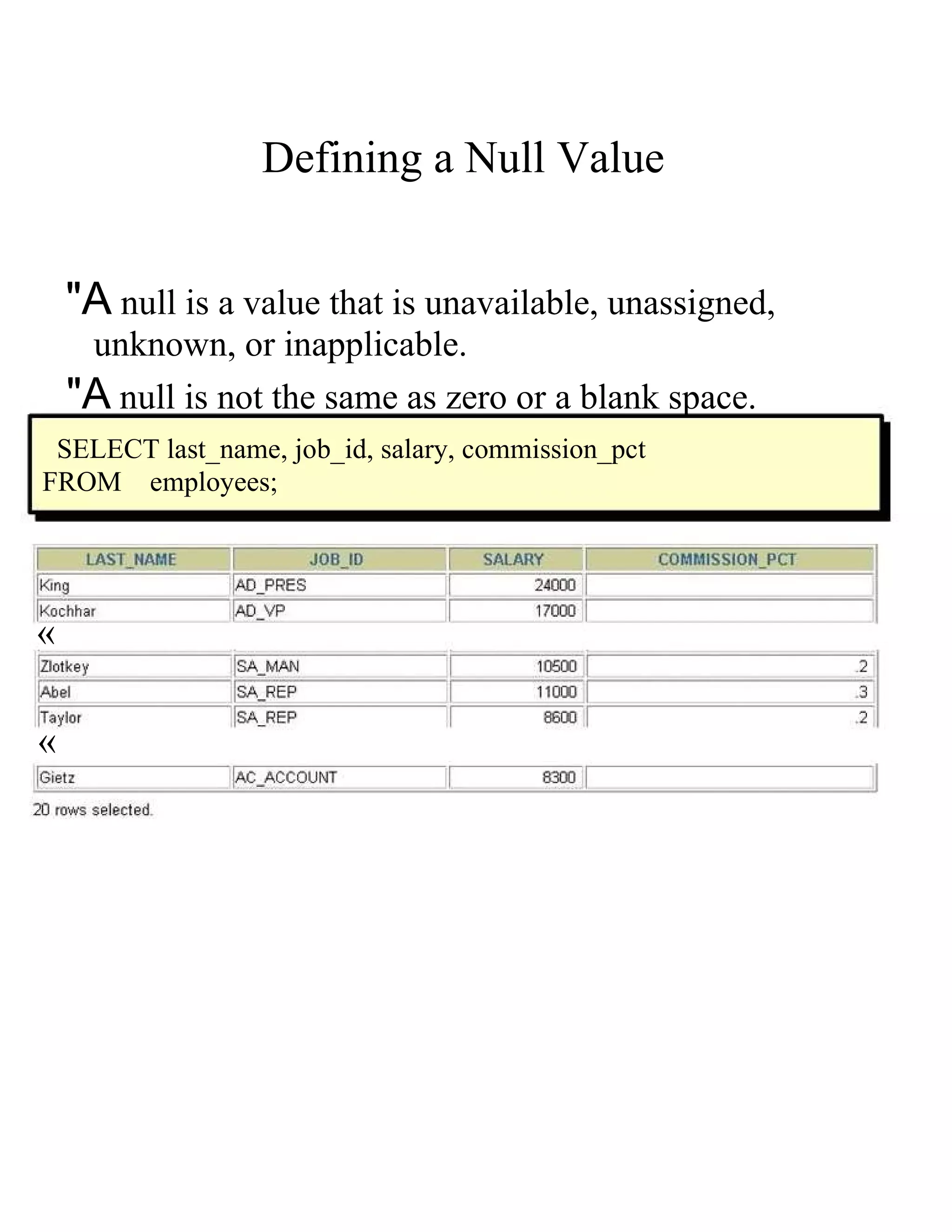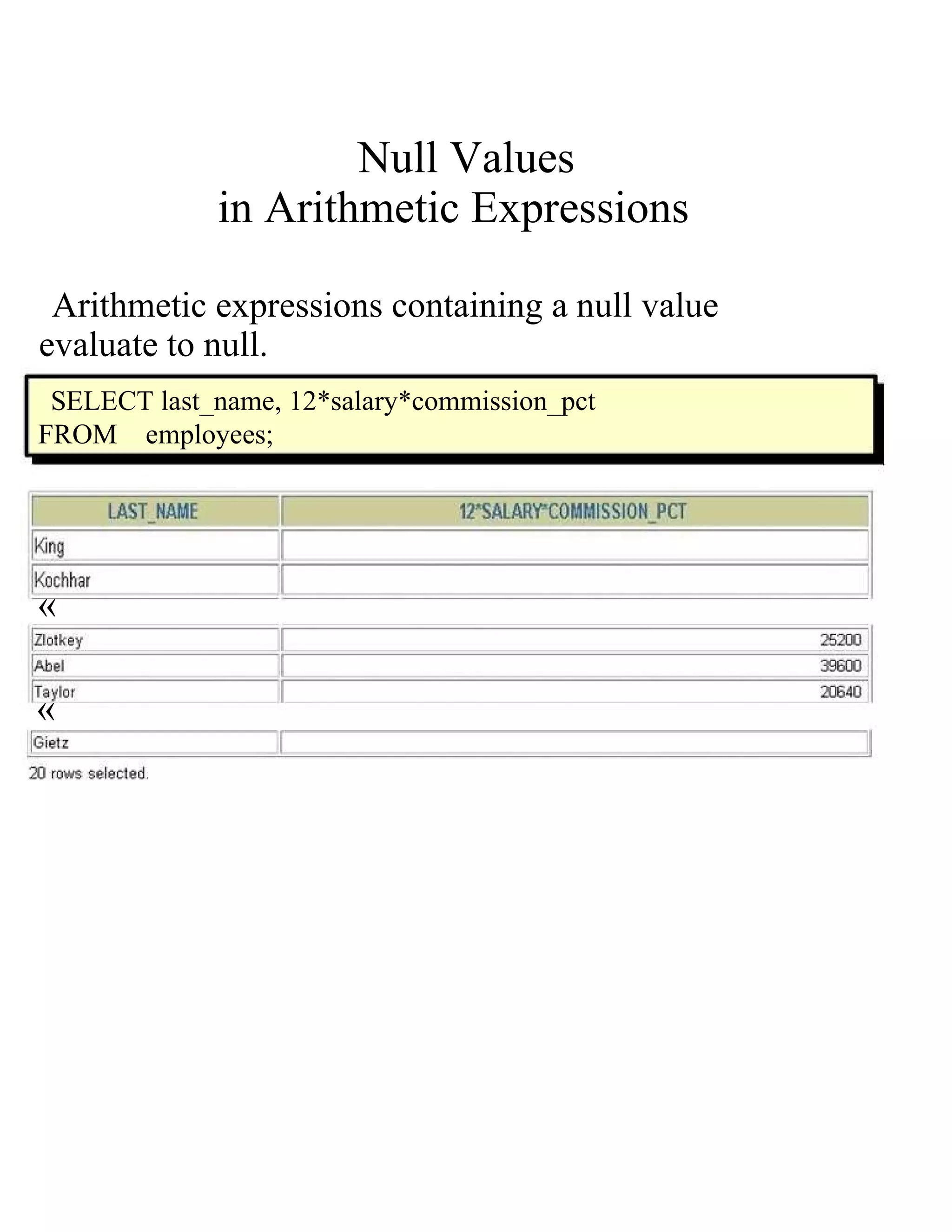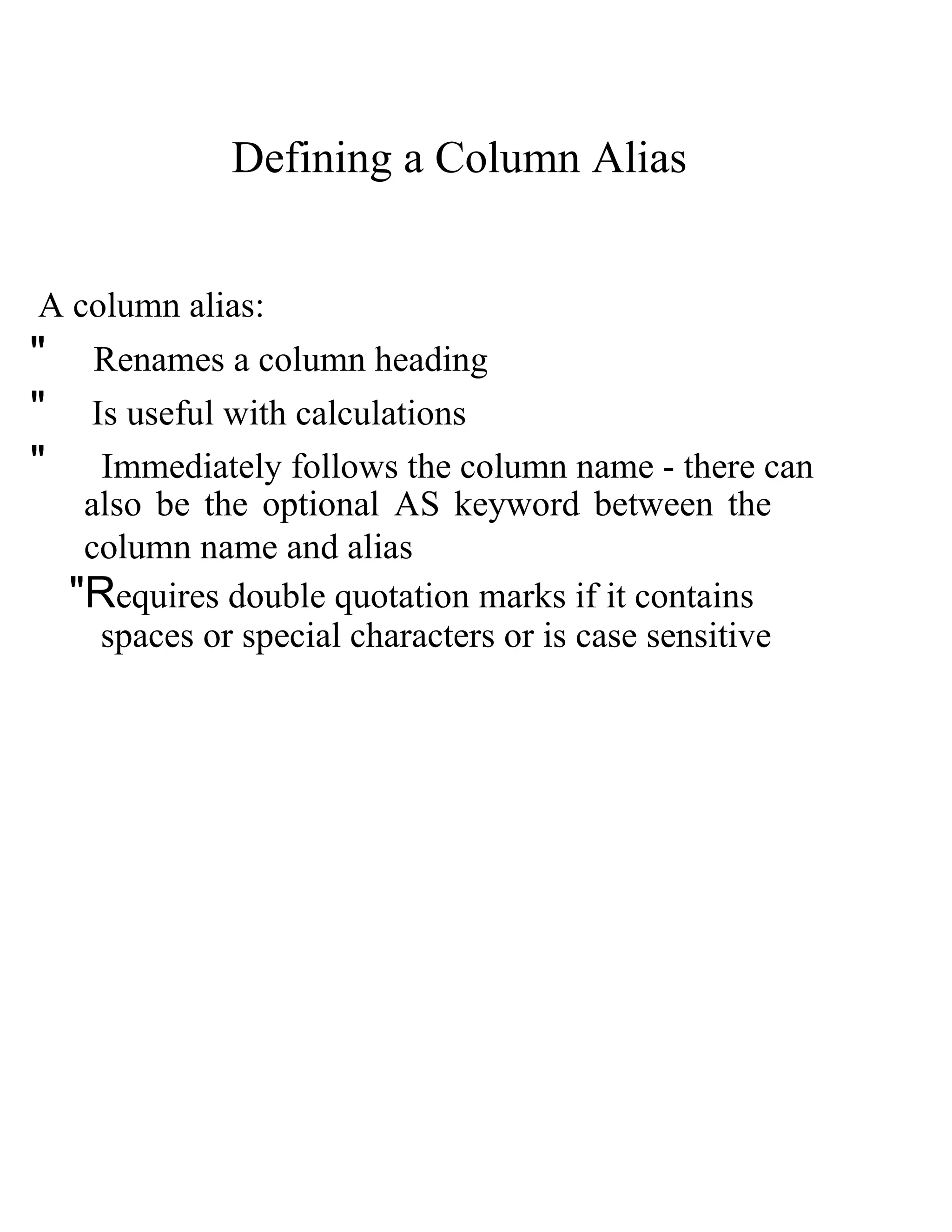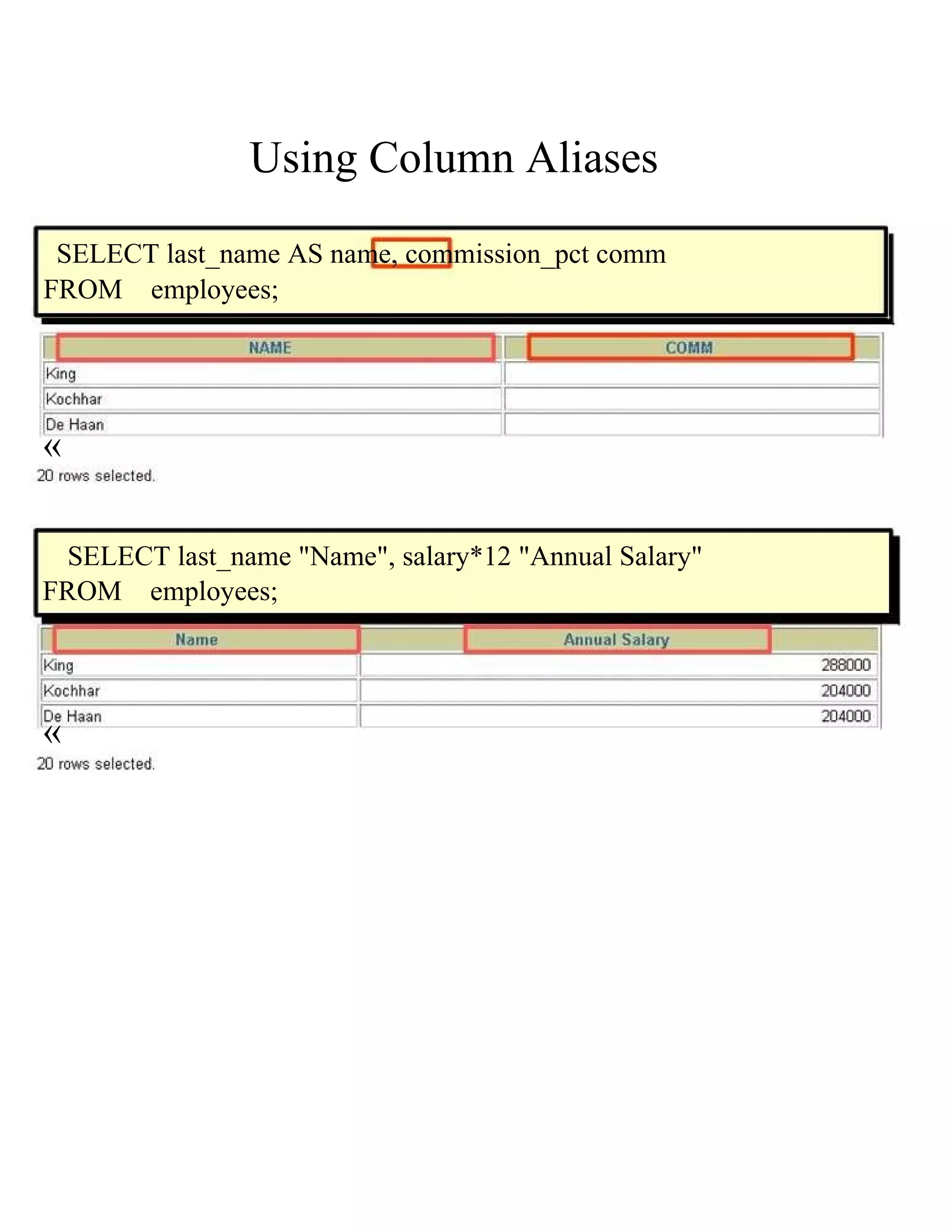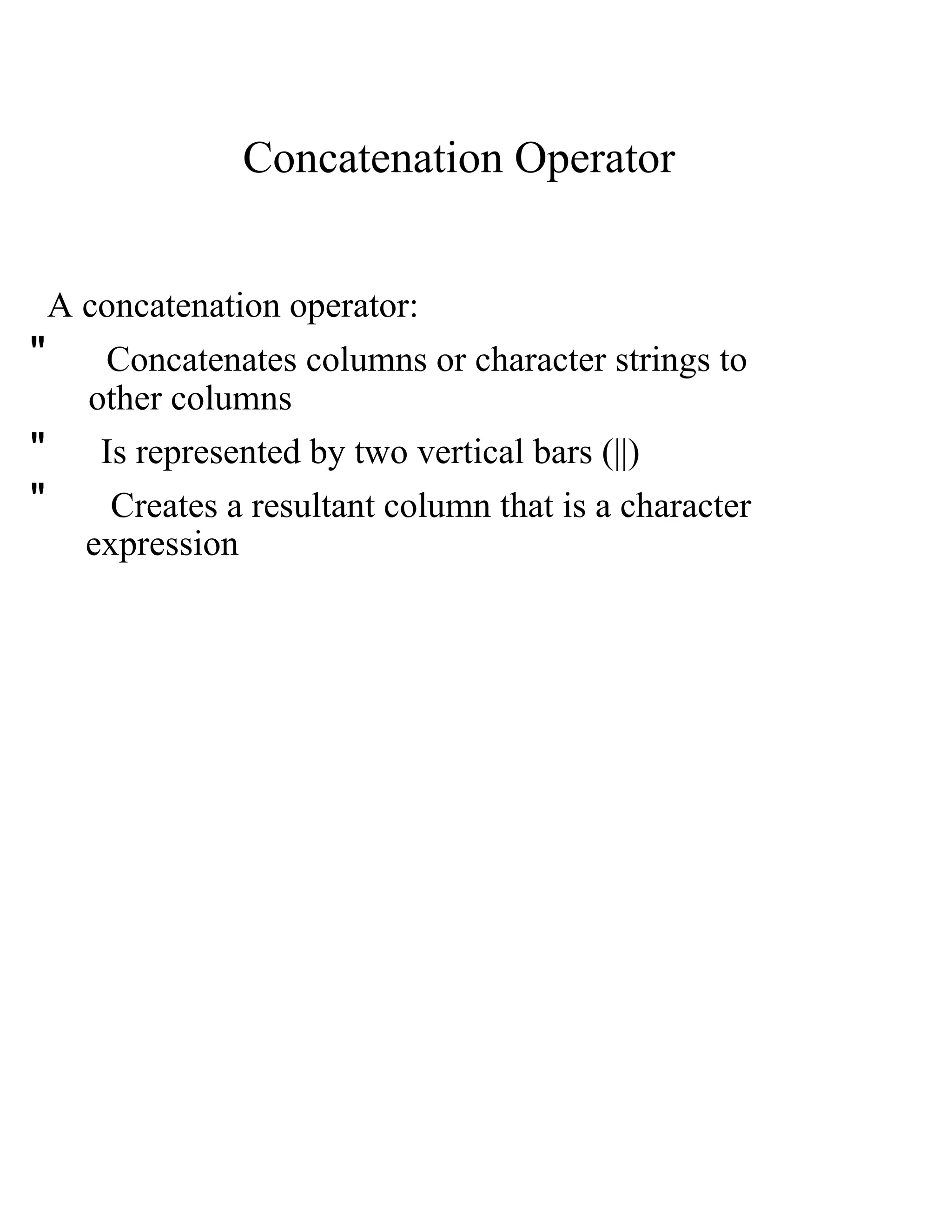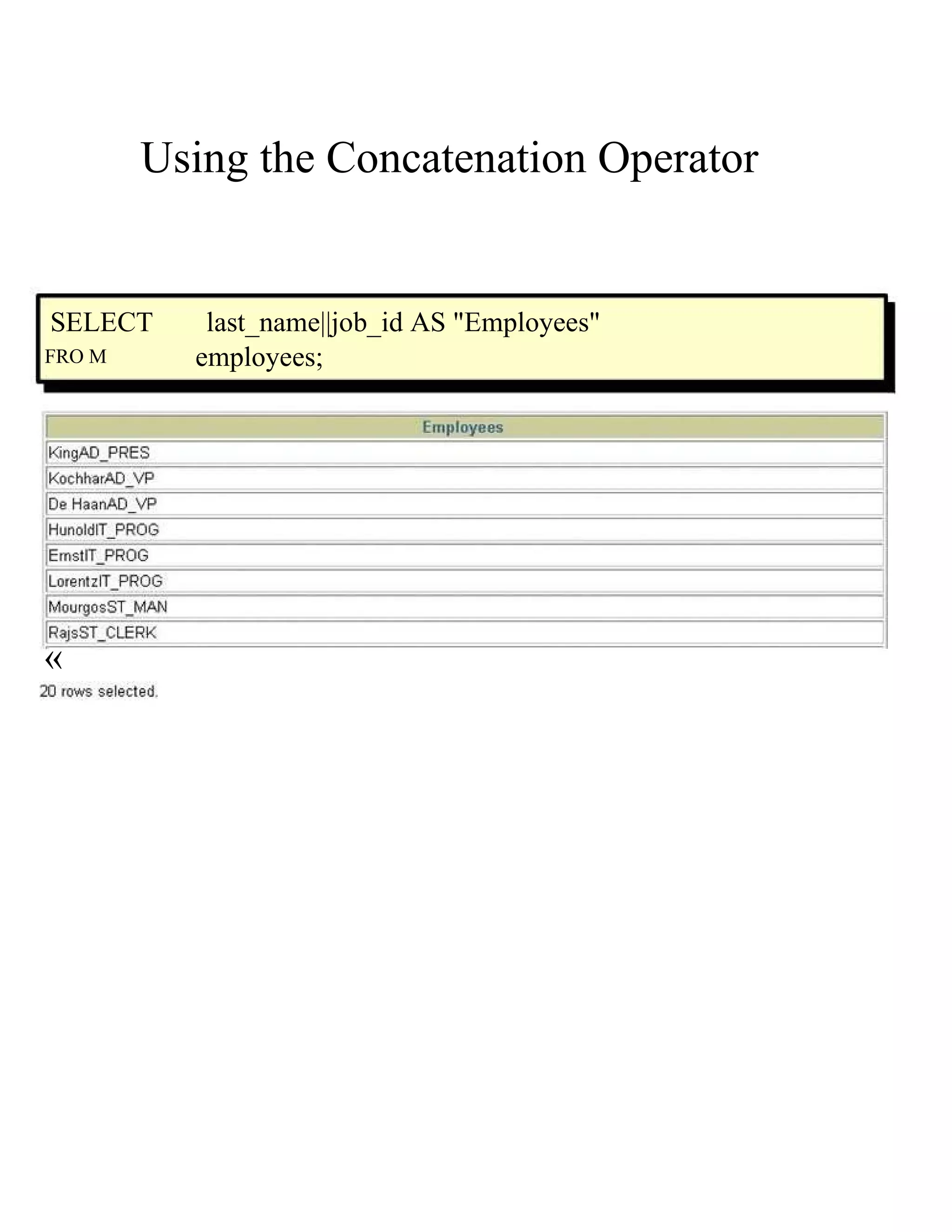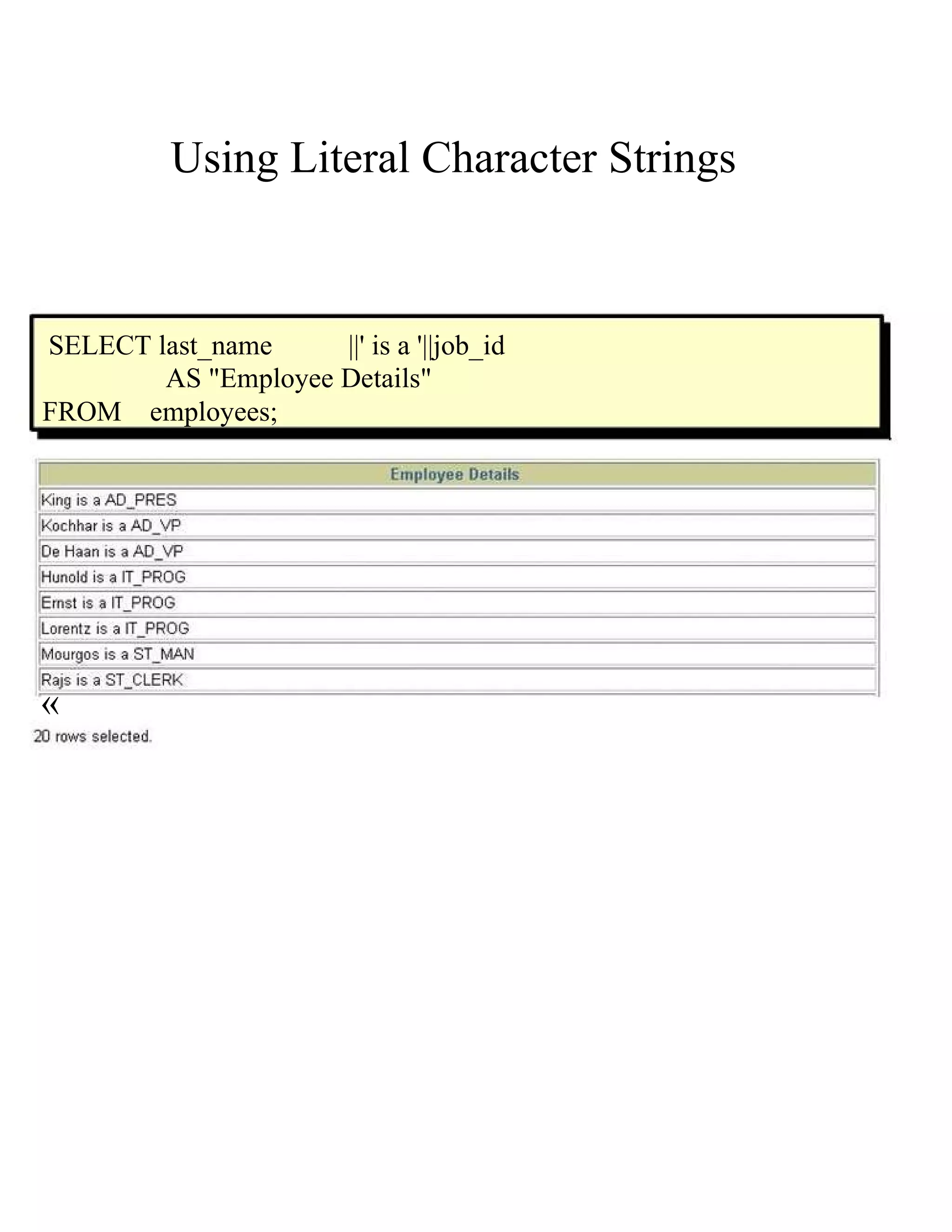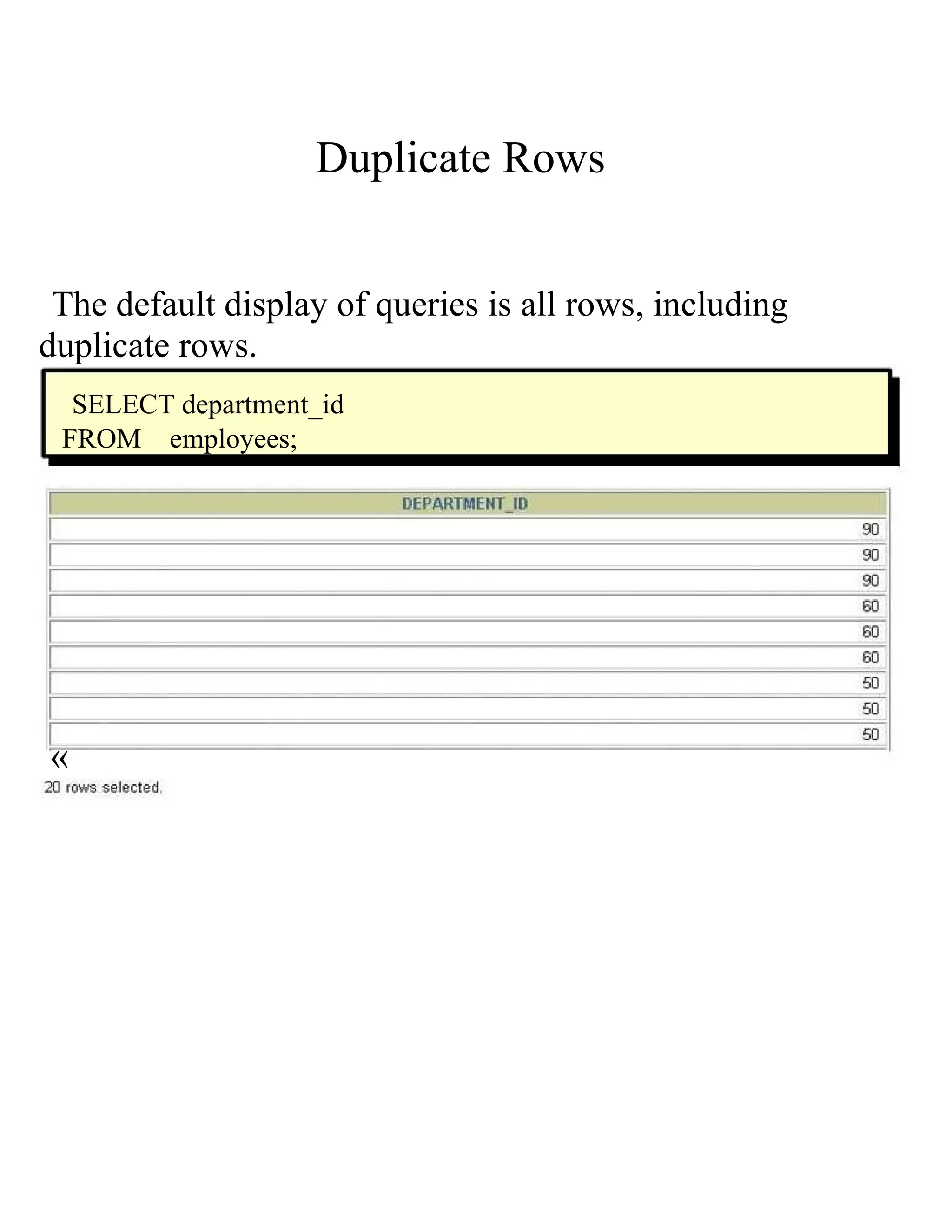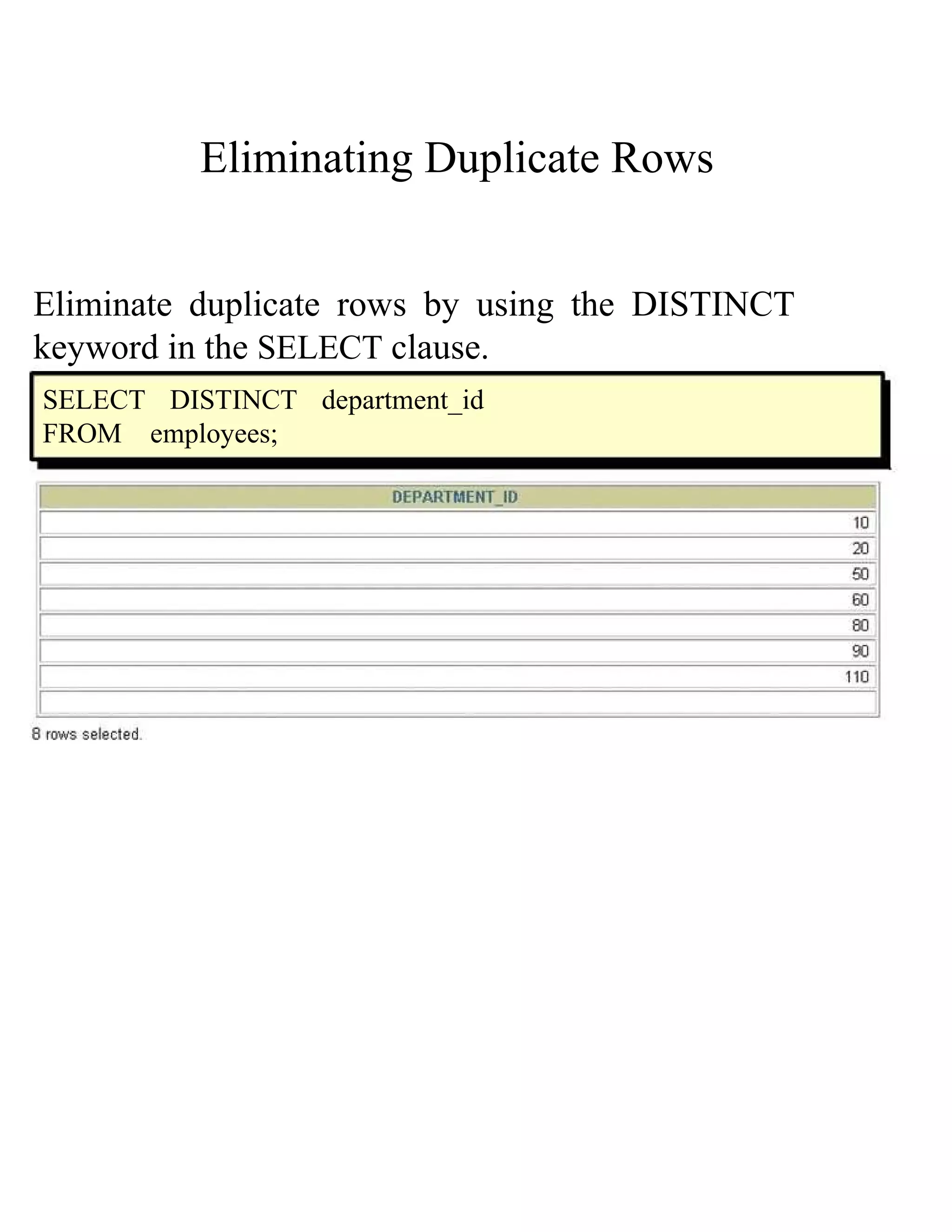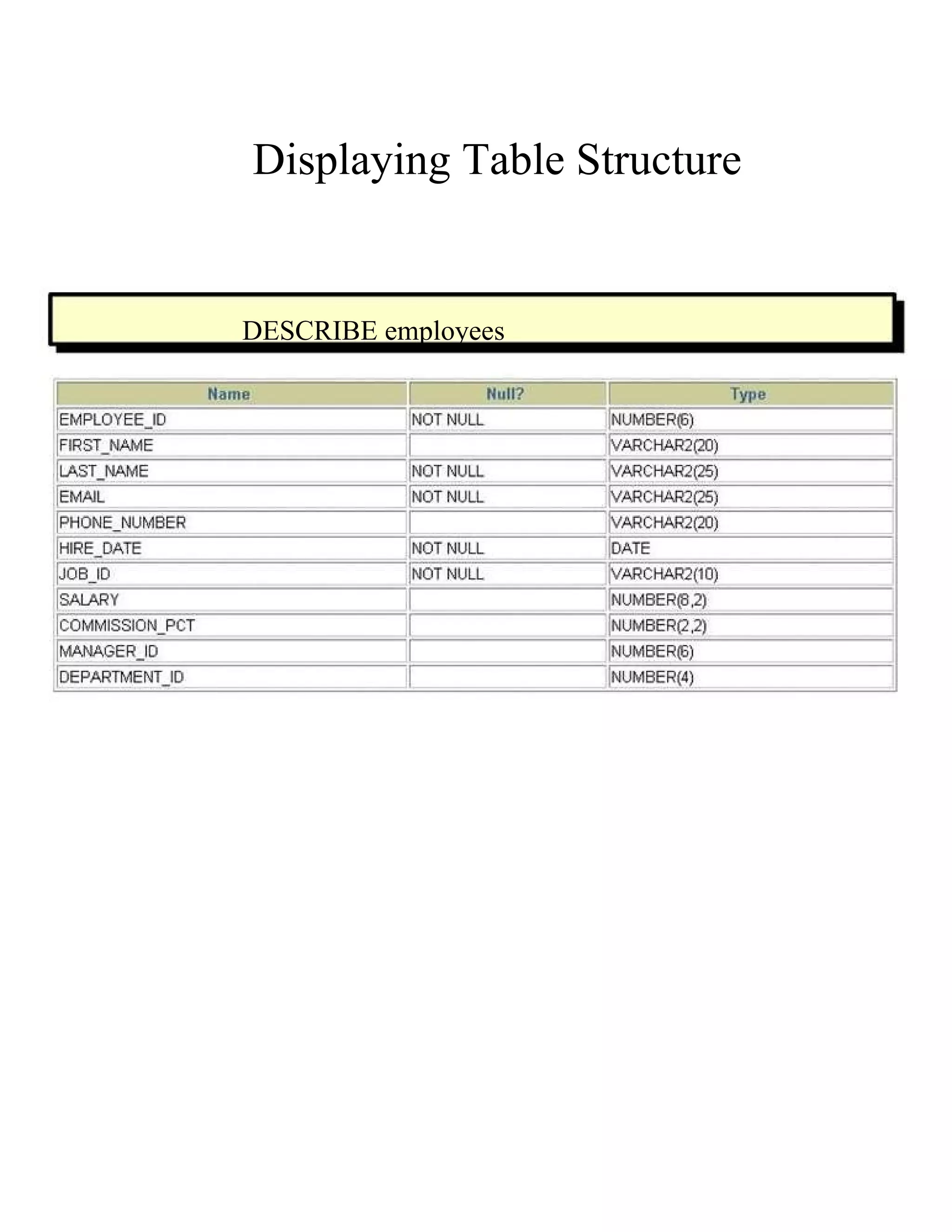This document provides an overview of basic SELECT statements in SQL, including:
- The SELECT clause identifies columns to retrieve from tables identified in the FROM clause.
- Arithmetic expressions can be used to manipulate number and date columns. Operators like +, -, *, / follow standard order of operations rules.
- Column aliases can rename columns and make column headings more readable.
- Concatenation using || combines character strings from different columns into one column.
- Literal strings and values can be included in the output.
- The DISTINCT keyword eliminates duplicate rows from the results.
- DESCRIBE shows the structure of a table.

![" " http://ecomputernotes.com Basic SELECT Statement SELECT * | { [DISTINCT] column | expression [ alias ],...} FRO M table; SELECT identifies what columns FROM identifies which table](https://image.slidesharecdn.com/writingbasicsqlselectstatements-111224104359-phpapp02/75/e-computer-notes-Writing-basic-sql-select-statements-2-2048.jpg)
